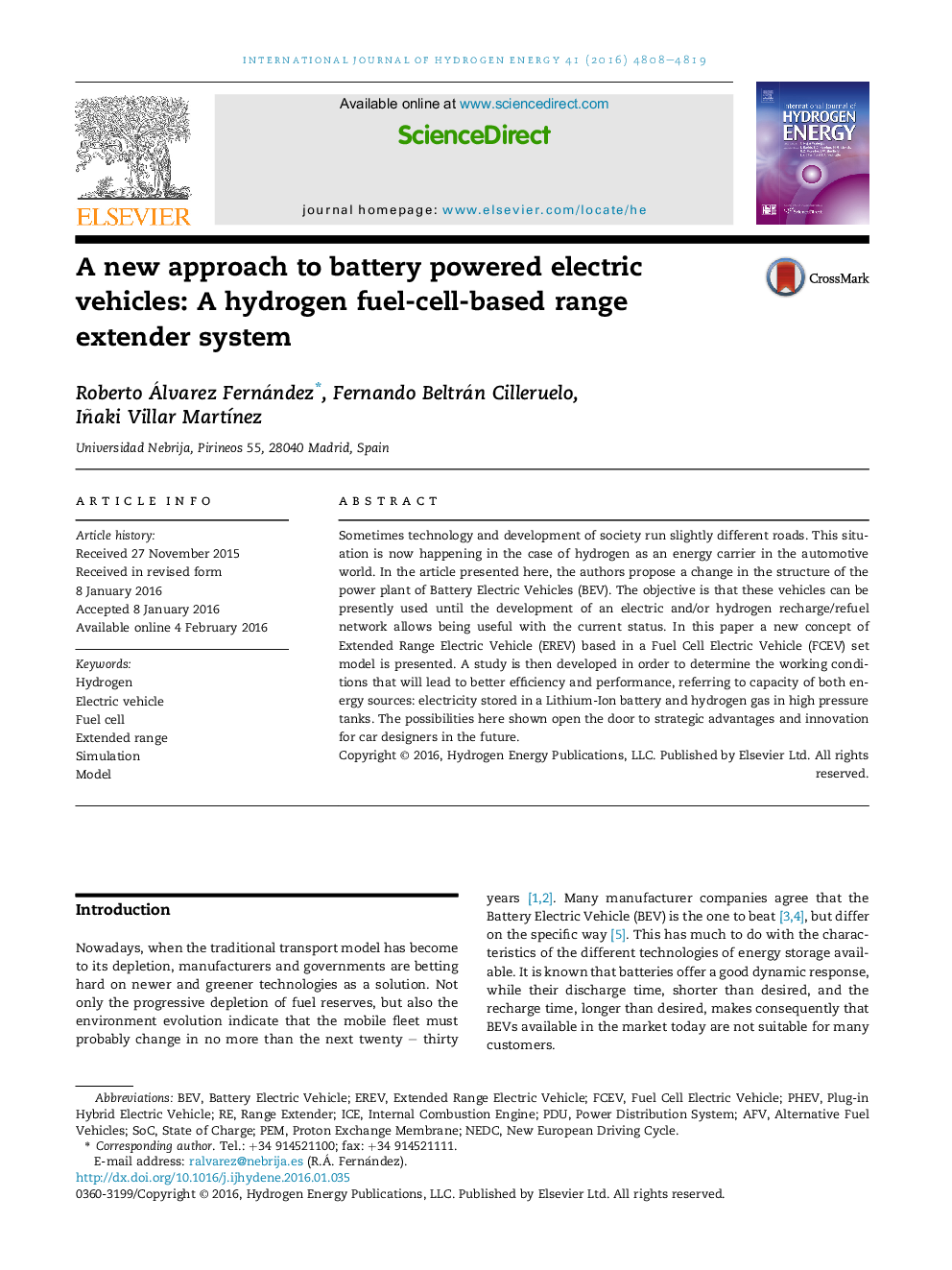| Article ID | Journal | Published Year | Pages | File Type |
|---|---|---|---|---|
| 1271168 | International Journal of Hydrogen Energy | 2016 | 12 Pages |
•The authors propose a change in the structure of the power plant of Battery Electric Vehicles (BEV) including a range extender system based in a Fuel Cell.•The objective is that these vehicles can be presently used until the deployment of a full electric and/or hydrogen recharge network is fulfilled.•The results presented show a powertrain concept that could avoid the commercialization problem associated to Battery Electric Vehicles and Fuel Cell Vehicles.•The sizing of the components and the drivetrain architecture and control is explained. The system is capable of handling real world situations within the limits of design requirements and will improve the current BEV and FCEV architectures, allowing longer trips and easy refuelling at the same time.
Sometimes technology and development of society run slightly different roads. This situation is now happening in the case of hydrogen as an energy carrier in the automotive world. In the article presented here, the authors propose a change in the structure of the power plant of Battery Electric Vehicles (BEV). The objective is that these vehicles can be presently used until the development of an electric and/or hydrogen recharge/refuel network allows being useful with the current status. In this paper a new concept of Extended Range Electric Vehicle (EREV) based in a Fuel Cell Electric Vehicle (FCEV) set model is presented. A study is then developed in order to determine the working conditions that will lead to better efficiency and performance, referring to capacity of both energy sources: electricity stored in a Lithium-Ion battery and hydrogen gas in high pressure tanks. The possibilities here shown open the door to strategic advantages and innovation for car designers in the future.
